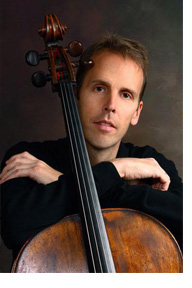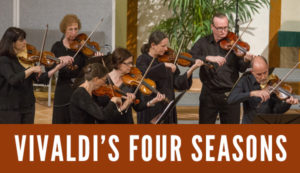BACH CELLO SUITES
Tuesday, June 8, 2021 | noon
First Presbyterian Church, Victoria
JOHANN SEBASTIAN BACH (1685-1750)
Suite No. 5 in C minor, BWV 1011
- Prelude
- Allemande
- Courante
- Sarabande
- Gavotte I / II
- Gigue
Suite No. 6 in D major, BWV 1012
- Prelude
- Allemande
- Courante
- Sarabande
- Gavotte I / II
- Gigue

Sponsors
Harrison & Jeanette Stafford
Wendall Wheeler Wilson
This concert is generously supported by our concert sponsors and by donors to the Victoria Bach Festival’s Annual Fund. Many thanks to our generous supporters!
About the Artist

Professor of Cello Gregory Sauer joined the Florida State College of Music in 2006. A native of Davenport, Iowa, Gregory Sauer attended the Eastman School of Music and the New England Conservatory. His principal teachers included Ada Marie Snyder, Charles Wendt, Paul Katz, Laurence Lesser, Bonnie Hampton and Colin Carr. For eleven years prior to his arrival at FSU Mr. Sauer taught at the University of Oklahoma, where he was named Presidential Professor (2005).
Praised for his versatility, Mr. Sauer performs in many different musical arenas. He has appeared in recital at the Old First Concert Series in San Francisco, the Crocker Art Museum in Sacramento, the Brightmusic Concert Series in Oklahoma City, at universities and schools of music such as the Blair School of Music at Vanderbilt, the Shepherd School at Rice University, the University of Iowa and the University of Tennessee, among many others. Mr. Sauer was a prizewinner in the Hudson Valley Philharmonic and Ima Hogg National competitions and has performed concertos with the Hudson Valley Philharmonic, the Houston Symphony, the New American Chamber Orchestra, the Quad City Symphony, Oklahoma City Philharmonic, the Columbus (GA) Symphony, the Tallahassee Symphony, and the Missoula Symphony, among others.
Mr. Sauer joined the Carpe Diem String Quartet in 2019, playing concerts in Carnegie Hall’s Weill Recital Hall, Siena, Italy, and in the group’s first China tour. Along with his brother, Thomas Sauer, he serves as co-Artistic Director of Chamber Music Quad Cities in their hometown of Davenport, Iowa. Other chamber music ventures have resulted in appearances at the Austin Chamber Music Center, the Snake River Music Festival, the Victoria Bach Festival, the Texas Music Festival, the Colorado Music Festival, and the Garth Newel Music Center. As a member of the Fidelio Quartet, a prizewinning group in the London International String Quartet Competition, he performed concerts in the UK, Germany, Italy, and the Tanglewood and Aspen Music Festivals.
In 2006, Mr. Sauer was appointed to the music faculty at Florida State University. Prior to that he taught eleven years at the University of Oklahoma, where he was named Presidential Professor. Other teaching/performing positions have been a visiting professorship at the University of California at Los Angeles, summer programs such as the Texas Music Festival, the Duxbury Music Festival, the Foulger International Music Festival, the Green Mountain Chamber Music Festival, Red Lodge Music Festival, and the Hot Springs Music Festival.
Mr. Sauer has recorded for MSR Classics, Harmonia Mundi, Albany, and Mark Records.
From Darkness to Dance
The musical term “suite” comes from the French word suiver, meaning “to follow.” The suite form of the eighteenth century consisted of a series of up to five dance movements following one after the other in sequence, sometimes with a prelude. Bach wrote a series of six suites for cello between the years 1717-1723, when he was employed as Kapellmeister for the court of Prince Leopold of Anhalt-Cöthen.
Bach’s Cello Suite No. 5 in C Minor is the only one of the six suites with a minor key as its home key. Its tone is somber and melancholic, but also ethereal. The memorable Sarabande movement is a minimalist marvel of contemplation and understatement.
The sixth suite is characterized by virtuosity, and demands more technical prowess then the other suites. With frequent string crossings, elaborate musical lines, and use of double stops, this brilliant and exciting suite invites listener to a joyous dance.
The musical term “suite” comes from the French word suiver, meaning “to follow.” The suite form of the eighteenth century consisted of a series of up to five dance movements following one after the other in sequence, sometimes with a prelude. Bach wrote a series of six suites for cello between the years 1717-1723, when he was employed as Kapellmeister for the court of Prince Leopold of Anhalt-Cöthen.
Bach’s Cello Suite No. 5 in C Minor is the only one of the six suites with a minor key as its home key. Its tone is somber and melancholic, but also ethereal. The memorable Sarabande movement is a minimalist marvel of contemplation and understatement.
The sixth suite is characterized by virtuosity, and demands more technical prowess then the other suites. With frequent string crossings, elaborate musical lines, and use of double stops, this brilliant and exciting suite invites listener to a joyous dance.



